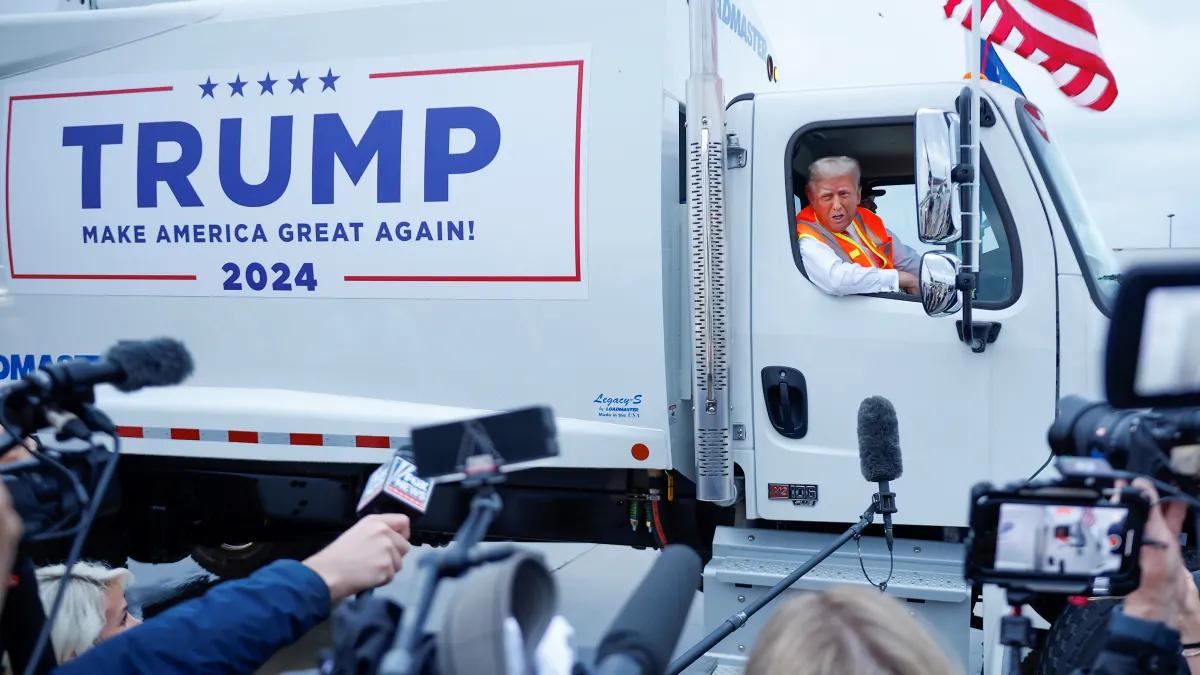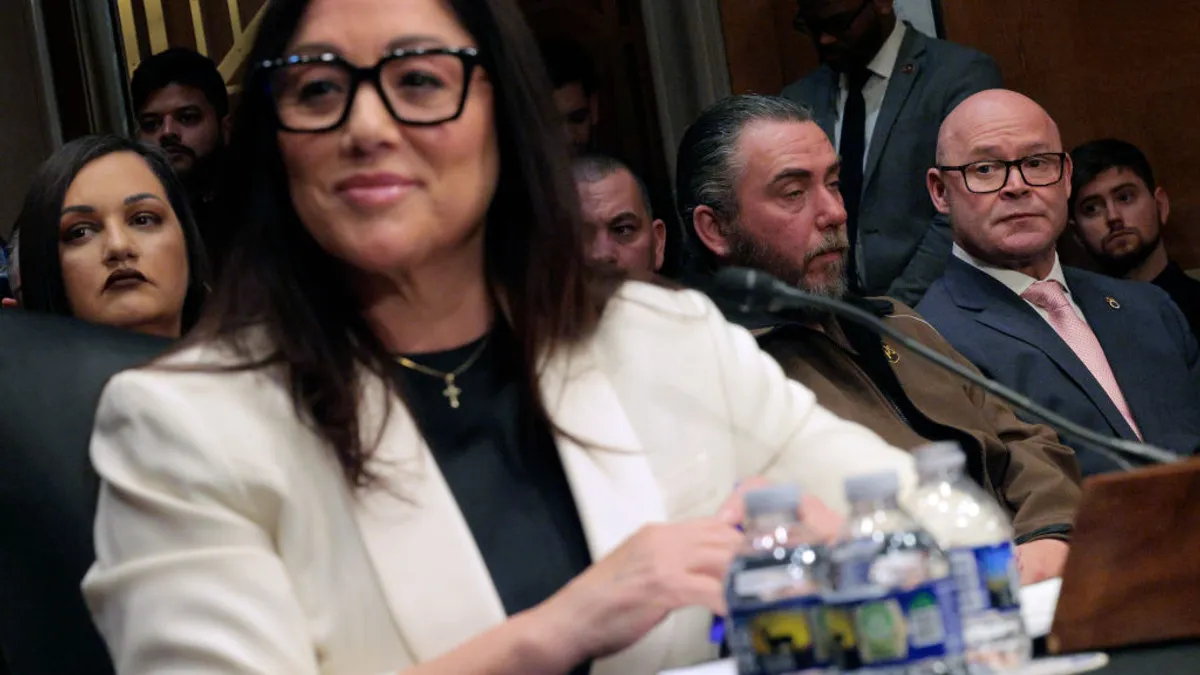The U.S. economy was on a uniquely strong run in recent years, until the pandemic hit, and solid waste companies performed very well along the way. Recent data about 2019 executive compensation indicates the leaders of those companies have continued to do well, too.
This month's first quarter earnings reports made it clear the coronavirus has temporarily halted momentum for what could have been another boom year, but it is too soon to know to what extent that might affect those at the top. Waste Management referenced near-term plans to reduce incentive compensation in general, among other coronavirus-inspired cost cuts. Covanta has trimmed executive salaries, including a 50% cut for its CEO, through mid-July. Market volatility could be another factor in how stock options bear out for executives at various companies as well.
The full effect on their compensation won't become clear until proxy filings are filed next spring, but this year's documents provide a useful look into how they ended 2019.
2019 CEO compensation
The following compensation breakdowns are ranked in order of each company's total annual revenue.
Advanced Disposal Services is excluded because it has not released the relevant information as of publication.
Waste Management President and CEO Jim Fish
- Base salary: $1,232,788 (the filing notes Fish donated $75,000 of his 2019 salary, and $50,000 of his 2018 salary, "to fund a scholarship program for children of Company employees")
- Stock awards, option awards, non-equity incentive plan compensation and all other compensation: $10,065,313
- Total 2019 compensation: $11,298,101
Republic Services CEO Don Slager
- Base salary: $1,169,192
- Stock awards, non-equity incentive plan compensation and all other compensation: $11,448,102
- Total 2019 compensation: $12,617,294
Waste Connections President and CEO Worthing Jackman
- Base salary: $716,792 (increased to $800,000 when promoted to CEO in July 2019)
- Share-based awards, non-equity incentive plan compensation and all other compensation: $2,691,582
- Total 2019 compensation: $3,408,374
GFL Environmental President and CEO Patrick Dovigi
- Base salary: $923,999 Canadian dollars (Dovigi's base salary increased to $1.5 million U.S. dollars this year)
- All other compensation, "comprised of insurance benefit and personal plane hours (at direct operating cost)": CA$534,000
- Total 2019 compensation: CA$1,457,999
Covanta President and CEO Steve Jones
- Base salary: $900,000
- Stock awards, non-equity incentive plan compensation and all other compensation: $4,624,159
- Total 2019 compensation: $5,524,159
Casella Waste Systems Chairman and CEO John Casella
- Base salary: $575,000
- Stock awards, non-equity incentive plan compensation and all other compensation: $2,146,590
- Total 2019 compensation: $2,721,590
Prior filings indicate many of these executives have seen a steady rise in compensation over recent years, particularly those that entered their roles in 2015 or later.
During the period outlined in a chart below, Fish started as CFO before moving to president in July 2016 and CEO in November 2016. Jackman started the period as executive president and CFO, later moving to president in July 2018 and CEO in July 2019. His total compensation in 2016 is higher due to special "annual incentive bonus awards" for named executive officers, as well as a "synergy bonus program" related to the acquisition of Progressive Waste Solutions that year. Jones started with Covanta as president and CEO in January 2015.
Understanding pay ratios
Total executive compensation figures may be eye-catching, but they can also change based on the performance of stock options and other variable factors. In an effort to try and bring more context to this area, Congress included a provision in the Dodd-Frank Wall Street Reform and Consumer Protection Act of 2010 that offers some additional insight.
Since Dec. 31, 2017, all public companies have been required to contrast CEO compensation with that of a selected “median employee" in a calculation that excludes the CEO's pay from that range. This is meant to offer transparency and incentives around tempering pay at the highest levels.
In the decade since Dodd-Frank, scrutiny of CEO pay has only increased. The Securities and Exchange Commission (SEC) approved the CEO pay ratio provision in 2015, and while some have questioned its value, others have found it illuminating.
“The number by itself doesn't necessarily tell you too much about a company, but when you can see it over time, that [does],” said Rosanna Landis Weaver, a program manager and expert on executive compensation for corporate accountability nonprofit As You Sow.
Landis Weaver told Waste Dive that CEO pay has risen significantly in recent years, often without a similar rise for employees. According to a 2019 study by the Economic Policy Institute (EPI), CEO compensation has grown 940% since 1978. In 2018, according to that study, the average CEO pay at the top 350 firms was around $17.2 million. That number also accounted for stock options once realized. EPI argued CEO pay is contributing to “rising inequality” and reflects the role's ability to set pay more than any dramatic change in job performance.
Tracking trends over the past few years, EPI found CEO pay fell 0.5% between 2017 and 2018 when measuring stock options realized, but grew 9.9% if measuring through stock options granted (i.e. exercised or not). Large stock option offerings, the organization reported, made up nearly half of CEO compensation in 2018.
Landis Weaver said those large numbers alone only tell half the story and called median employee pay an important metric, even more so than pay ratio. In some industries, large ratios may exist even as lower-tier employees earn comfortable wages. For the waste industry, any disparity along those lines would be especially notable in current times, Landis Weaver said, given the risks frontline employees are facing from the new coronavirus.
The consulting firm Compensation Advisory Partners, which closely tracks CEO pay, offers an up-to-date sector breakdown monitoring ratios across industries. Ryan Colucci, a senior associate with the firm, told Waste Dive it can be difficult to compare companies and industries, as calculations for median pay differ and are influenced by factors including geographic footprint and the number of employees.
“In terms of red flags or things that would draw scrutiny, magnitude of the ratio draws the most scrutiny but can usually be explained by looking at the operational structure of the company or by a one-time compensation event for the CEO,” Colucci said.
The biggest waste companies have lower CEO pay ratios than large counterparts in other industries – even when looking at Waste Management and Republic Services, which have by far the biggest ratios. “These ratios are not as eye-popping,” said Landis Weaver, while caveating she still sees them as “problematic” given pay discrepancies with frontline workers.
Some companies with smaller ratios also reflect trends outside of the waste industry. Family-owned companies, for example, sometimes have more narrow pay ratios and may have higher pay for median employees. John Casella, longtime CEO of Casella Waste Systems, is one example. His 2019 pay was 47 times that of the company’s median employee, as opposed to over 100 times greater at larger companies.
Colucci said pay ratios within the waste industry “seem typical” compared with other industries, but noted waste ratios “tend to be a little lower” and that median employee pay appears to be very stable year to year.
Here is the breakdown of total CEO compensation to median employee pay for publicly-traded waste companies.
| CEO | CEO Pay | Median Employee Pay | 2019 Pay Ratio | |
| Waste Management | Jim Fish | $11.3M | $76,048 | 149:1 |
| Republic Services | Don Slager | $12.6M | $63,899 | 197:1 |
| Waste Connections | Worthing Jackman | $3.41M | $55,377 | 61.5:1 |
| Covanta | Steve Jones | $5.52M | $102,569 | 54:1 |
| Casella Waste Systems | John Casella | $2.72M | $58,527 | 47:1 |
Calculation notes
- Waste Management selected a "driver in the United States" earning $76,048 as its median employee, excluding subcontractors and 489 employees in India from the calculations.
-
Republic Services used the same median employee as in 2018, an unidentified position earning $63,899.
-
Waste Connections identified its median employee as a mechanic earning $55,377. Due to the change in CEOs mid-year, Waste Connections chose to use Jackman's compensation for the comparison. Executive Chairman and former CEO Ron Mittelstaedt (who earned $3,286,799 last year) was excluded from the calculation, as were any temporary employees. The company also noted that when factoring in $18,747 worth of annual benefits for both employees the ratio would be 46.2:1.
-
Covanta's median employee, an unidentified position, earned $102,569. The company excluded all 173 of its international employees from the calculation.
-
Casella's median employee, an unidentified person also used in 2018, earned $58,527.
GFL Environmental is not required to publish this information as a Canadian company and Advanced Disposal Services has not released a proxy filing to date.






















